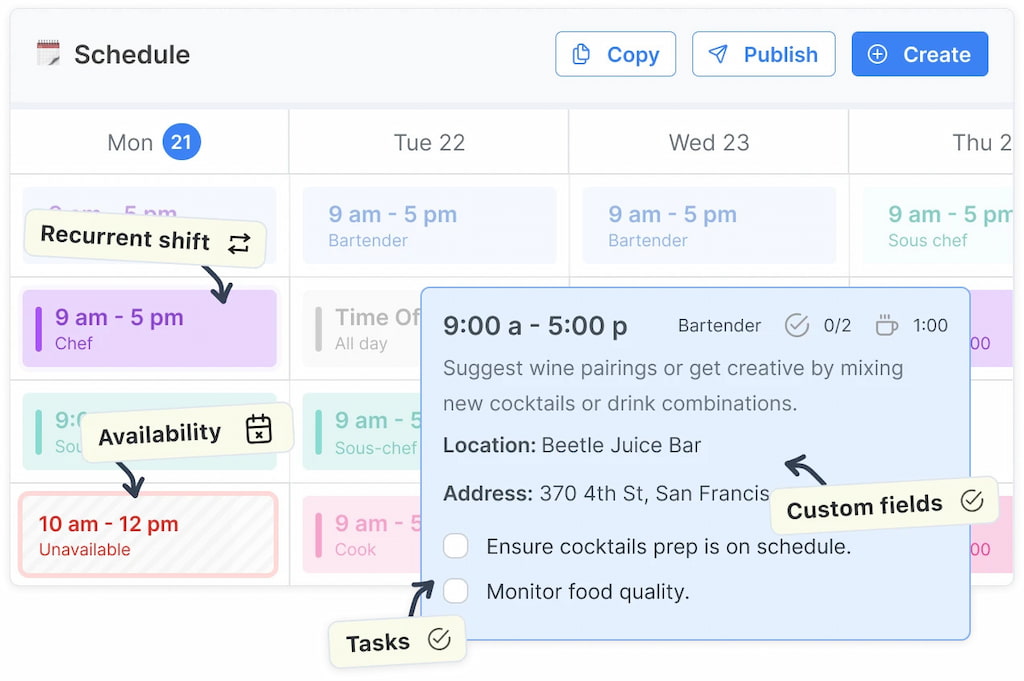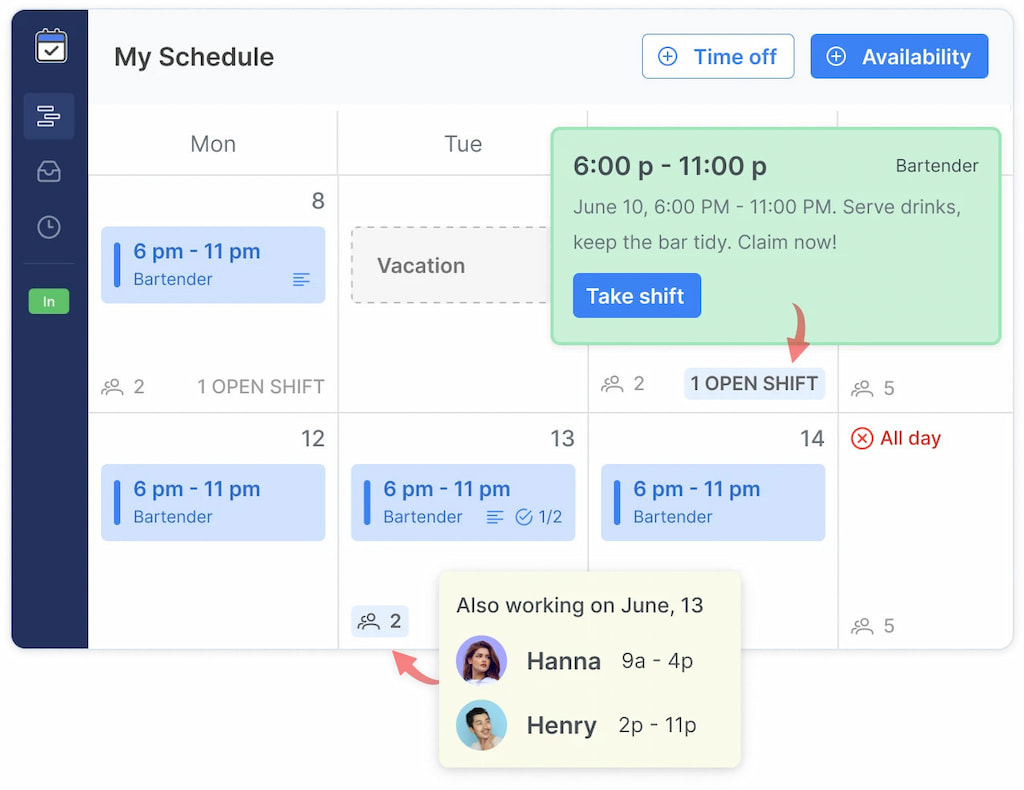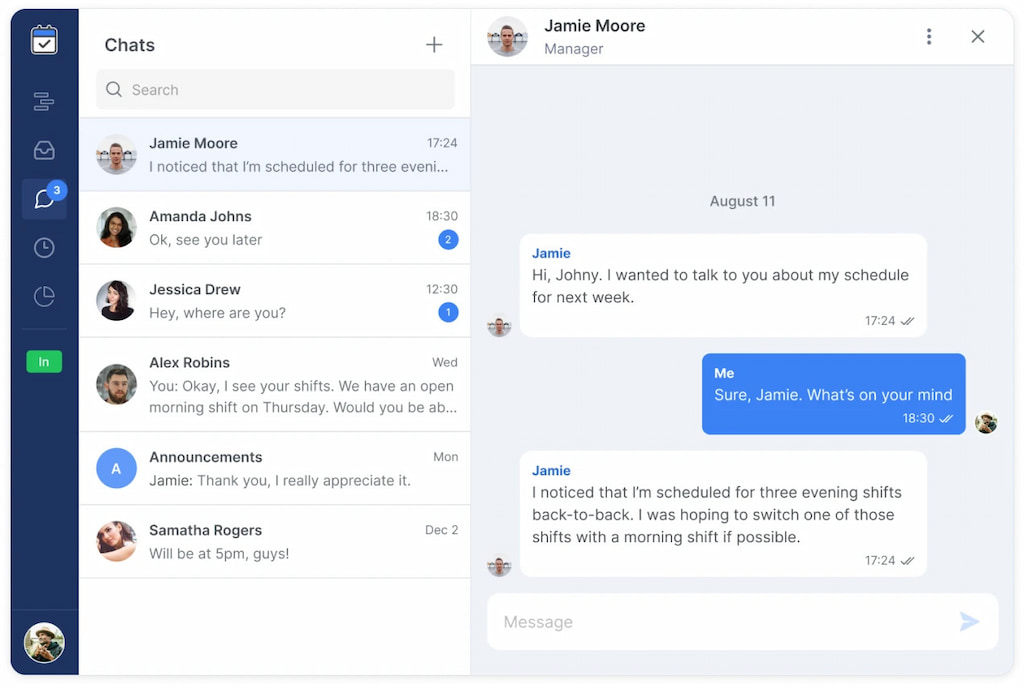Half your staff is stuck in traffic, a key project deadline just got moved up, and customer demand is spiking unexpectedly. In a traditional scheduling system, this would mean chaos — frantic phone calls, shift reshuffling, and costly overtime. But with adaptive scheduling software, everything recalibrates automatically. Shifts adjust. Notifications go out. Resources are reallocated — all in real time.
In 2025, adaptive scheduling is becoming one of the most important innovations in workforce management. This guide explores what adaptive scheduling software is, how it works, why it matters, and how Shifts by Everhour is leading the way.
What Is Adaptive Scheduling Software?
Adaptive scheduling software is an intelligent workforce planning system that automatically adjusts schedules based on changing conditions — such as staff availability, demand fluctuations, project updates, or real-time operational data.
Unlike traditional scheduling tools that rely on fixed plans, adaptive platforms leverage automation, predictive algorithms, and live data to dynamically:
- 🔄 Reassign shifts
- ⚖️ Balance workloads
- 💰 Optimize labor costs in real time

How it works ⚡
- 📊 Input data: Collect real-time information such as attendance, demand forecasts, shift swaps, and project progress.
- 🔍 Analyze & predict: AI or algorithmic models evaluate the data, forecast future needs, and identify gaps or risks.
- 🛠️ Auto-adjust schedules: The platform recommends or directly implements schedule changes — e.g., reassigning shifts, pulling in reserves, or redistributing hours.
- 📣 Notify stakeholders: Staff are alerted instantly via mobile or email, ensuring seamless coordination.
By combining these steps, adaptive scheduling software keeps your workforce agile, reduces downtime, and improves operational efficiency.
Why Adaptive Scheduling Matters in 2025
The future of workforce management is dynamic. Static, one-size-fits-all scheduling no longer works in a world defined by rapid change. Adaptive scheduling meets this new reality head-on, offering tangible benefits:
- ⚡ Improved responsiveness: React quickly to demand surges, sick calls, or last-minute changes.
- 📈 Higher productivity: Match the right people to the right tasks at the right time.
- 💰 Reduced labor costs: Prevent overstaffing and avoid expensive overtime.
- 😊 Employee satisfaction: Give workers more flexibility and reduce scheduling conflicts.
- ✅ Compliance assurance: Automatically ensure shifts meet labor law and rest requirements.
📊 Companies using adaptive scheduling see an average 28% reduction in overtime costs and 35% fewer last-minute shift changes compared to static scheduling models.
Key Features of Adaptive Scheduling Software
1. ⏱️ Real-time shift adjustments
Adaptive systems continuously monitor staffing conditions and automatically reassign roles or reschedule shifts as variables change — without manual input.
2. 🤖 AI-powered demand forecasting
Machine learning algorithms predict future staffing needs based on sales data, historical patterns, or operational KPIs — allowing you to plan ahead with precision.

3. 📣 Automated notifications & communication
Staff receive instant updates when schedules change, improving communication, reducing confusion, and minimizing no-shows.
4. 🧑💼 Self-service & flexibility
Employees can set preferences, request changes, or claim open shifts directly through the platform — while the system dynamically adapts schedules to accommodate them.
5. ✅ Compliance & labor law checks
The software automatically validates schedules against regulations (like rest periods or max hours), reducing legal risk and ensuring operational compliance.
6. 🔗 Integrations with time tracking and payroll
Most adaptive scheduling tools integrate with time tracking, payroll, and HR systems — creating a seamless, automated workforce ecosystem.
Real-World Use Cases
- 🛍️ Retail: Automatically increase staffing levels during unexpected sales spikes or seasonal surges.
- 🏥 Healthcare: Reassign shifts when a nurse calls in sick or patient volume changes mid-shift.
- 🏭 Manufacturing: Adjust shift rotations in real time to meet fluctuating production demands.
- 🛠️ Field services: Reassign technicians based on new work orders, cancellations, or route changes.
- 🍽️ Hospitality: Balance front-of-house coverage dynamically based on reservations and walk-in traffic.

Best Adaptive Scheduling Software in 2025
| Tool | Key features | Pricing/Plan | Ideal for |
|---|---|---|---|
| Shifts by Everhour | Drag-and-drop scheduling; real-time adjustments; built-in time tracking; open shift management; scheduled vs. actual reports | Free & paid plans | Teams seeking adaptive scheduling with time tracking in one platform |
| Deputy | AI forecasting; auto-scheduling; labor compliance; real-time shift updates; mobile alerts | Free & paid plans | Companies with hourly staff and complex shifts |
| When I Work | Adaptive scheduling; shift swapping; demand-based planning; attendance tracking | Free trial & paid plans | SMBs needing fast, flexible scheduling |
| Homebase | Automated scheduling; communication tools; labor forecasting; compliance checks | Free & paid tiers | Small businesses and retail teams |
| 7shifts | Real-time adjustments; labor cost control; restaurant-specific scheduling; POS integrations | Free & paid plans | Hospitality and restaurant businesses |
| Connecteam | Adaptive workforce planning; mobile app; communication suite; task scheduling | Free & paid plans | Field and deskless teams |
| QuickBooks Time | Scheduling linked to payroll; automated alerts; compliance monitoring; GPS tracking | Paid plans | Companies already using QuickBooks ecosystem |
| Sling | Adaptive scheduling; labor cost analysis; real-time messaging; template creation | Free & paid tiers | Teams shifting from manual to automated scheduling |
| Shiftboard | Large-scale scheduling; demand-based staffing; workforce analytics; compliance alerts | Paid enterprise plans | Enterprises with large, complex scheduling needs |
| ZoomShift | Shift templates; attendance tracking; adaptive scheduling; payroll export | Free & paid plans | Small to mid-sized businesses seeking simplicity |
Quick tool highlights
- Shifts by Everhour: Best all-around platform for combining adaptive scheduling with integrated time tracking and real-time reporting.
- Deputy: Great for demand forecasting and automated workforce planning.
- 7shifts: A top pick for restaurants and hospitality operations with frequent demand changes.
- Shiftboard: Enterprise-level power for large organizations with complex scheduling rules.
How Shifts by Everhour Fits Into Adaptive Scheduling
While many platforms focus on static scheduling, Shifts by Everhour brings adaptive scheduling capabilities into everyday workforce management. It pairs powerful scheduling tools with real-time visibility, attendance tracking, and scheduled-vs-actual reporting — helping teams react to changes instantly. Here’s how it adds value:
- Dynamic scheduling: Managers can adjust shifts in seconds, and the platform updates across devices automatically.

- Smart forecasting: Combine historical data with real-time metrics to better anticipate labor needs.
- Self-service flexibility: Employees can swap shifts, pick up open hours, and update availability directly from the app.

- Integrated time tracking: Track actual work hours against scheduled hours to identify trends and improve future planning.
- Seamless communication: Push notifications ensure everyone is always on the same page.

For teams looking to transition from static planning to adaptive, data-driven workforce scheduling, Shifts by Everhour is one of the most accessible and effective solutions on the market.
Best Practices for Implementing Adaptive Scheduling
To fully leverage adaptive scheduling, follow these field-tested tips:
- 🧹 Start with clean data: Ensure availability, skills, and shift data are accurate before automation.
- 📋 Define business rules: Set clear priorities (e.g., cost optimization vs. employee preference) to guide automation.
- 📢 Communicate change early: Explain adaptive scheduling benefits to staff to build trust and reduce pushback.
- 📊 Track performance KPIs: Measure metrics like shift adherence, overtime hours, and schedule change frequency.
- 🔄 Iterate and optimize: Use feedback and analytics to continuously refine scheduling rules and workflows.
FAQ: Adaptive Scheduling Software
What makes scheduling software “adaptive”?
Adaptive software uses real-time data, automation, and AI to automatically adjust schedules as conditions change — without manual intervention.
Is adaptive scheduling only for large businesses?
No. Even small businesses benefit from dynamic scheduling, especially those with fluctuating demand or frequent last-minute changes.
How does it impact labor costs?
By reducing overstaffing, overtime, and missed shifts, adaptive scheduling can significantly lower labor expenses. [Insert verified stat]
Can employees still control their schedules?
Yes. Most adaptive systems include self-service tools for availability, swaps, and open shift selection — enhancing flexibility and satisfaction.
Does adaptive scheduling improve compliance?
Absolutely. These platforms automatically validate schedules against labor laws and alert managers to potential violations before they happen.
Final Thoughts
Work isn’t static — and your scheduling software shouldn’t be either. As businesses navigate unpredictable demand, flexible work models, and tighter compliance requirements, adaptive scheduling software is no longer a luxury — it’s a necessity.
Whether you’re running a retail store, managing a healthcare team, or coordinating field services, adaptive scheduling helps you stay agile, reduce costs, and empower your workforce.
And if you’re ready to bring adaptive scheduling and time tracking together, Shifts by Everhour offers everything you need — real-time adjustments, accurate reporting, and smarter workforce decisions — all in one place.

